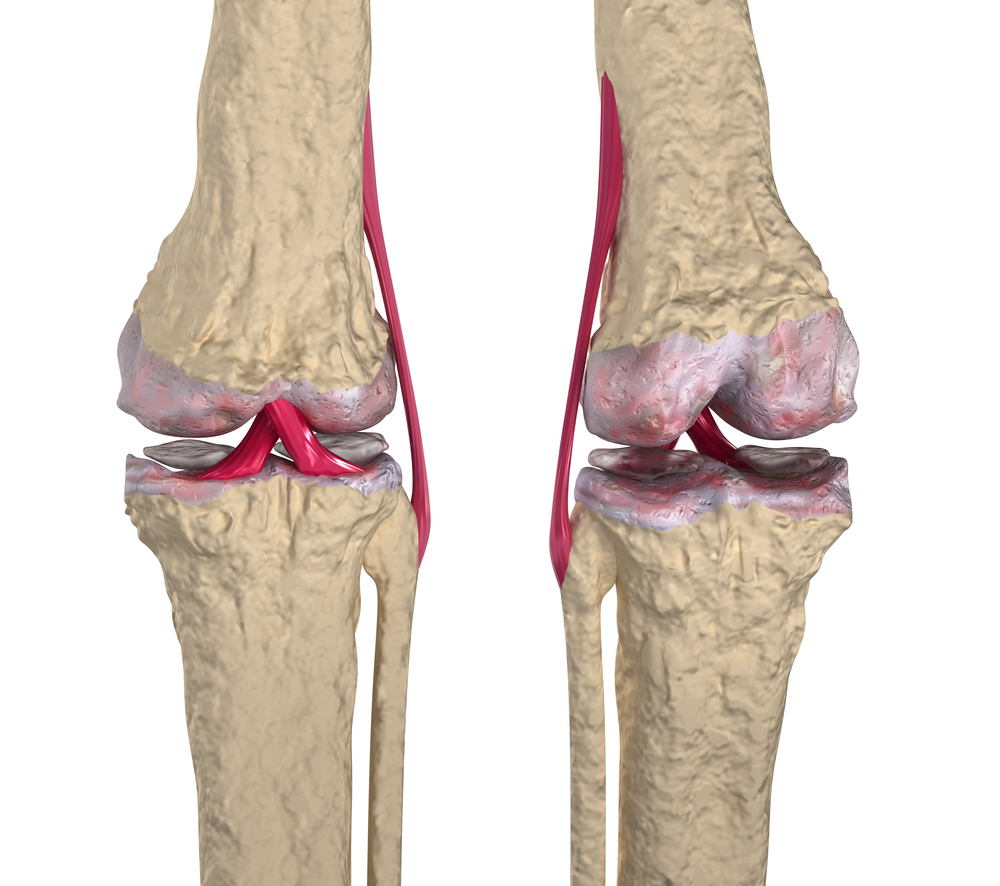Arthritis of the Knee
The most effective treatment options for Knee Arthritis

Arthritis of the knee results in a wearing away of the cartilage of the knee. There a numerous types of arthritis, with osteoarthritis being the most common form of wear and tear arthritis. Some of the most common symptoms of arthritis are pain, swelling and stiffness.
Osteoarthritis comes from the degeneration of the knee over time. The knee’s cartilage becomes worn away and eventually leads to painful friction between the bones. As the wear of the cartilage progresses, the symptoms usually worsen.
When Dr. Nicholas Alexander diagnoses knee osteoarthritis, it is usually classified based on its severity using a standing weight bearing x-ray and possibly an MRI. The following findings help the specialist classify the extent of knee arthritis into one of four stages:
- Joint space narrowing. Measurements of the joint spaces are taken in millimeters.
- Osteophyte presence. The number and size osteophytes, which are bone spurs or growths that occur due to the deterioration of cartilage and bone, is taken into account.
- Bone loss. Bone loss indicates arthritis has reached a severe stage.
- When the arthritis progresses to the point that the knee becomes bow legged or knock need
Rheumatoid Arthritis comes from autoimmune inflammatory state in the body and it can be found in multiple joints within the body. Rheumatoid Arthritis can develop over weeks or months and may progress much faster than Osteoarthritis. The disease causes the synovial membrane covering the knee joint to swell. This results in pain and stiffness, and loss of mobility in the knee.
Treating Knee Arthritis
Non-surgical treatment options that may be used to treat knee arthritis include the following:
- Activity modification. Slowing down or limiting impact and load bearing activities helps calm the inflammation and subsequently decrease the pain associated with arthritis.
- Nonsteroidal anti-inflammatory medications (NSAIDs). Over-the-counter and prescriptions medications that work by decreasing inflammation and subsequently the
- Injections- consisting of corticosteroids or hyaluronic acid (synthetic joint fluid) may alleviate the stiffness and pain associated with osteoarthritis
- Physical therapy. Strengthening the muscles of the lower extremity helps take pressure off the knee joint and worn cartilage, which improves function and decreases pain.
When the pain, stiffness, and immobility associated with knee arthritis does not improve or gets worse, surgery may be recommended. A total knee arthroplasty (TKA) is a surgical procedure used to remove arthritic bone and replace it with metal and plastic components. Following a TKA, knee joint anatomy and function are restored.
Seeking Treatment for Knee Arthritis
Diagnosing and treating osteoarthritis of the knee as soon as possible will help to alleviate the debilitating pain and thus improve your ability to get around and do the things you like to do. If knee arthritis is affecting your quality of life, please don’t hesitate to contact our office in either Mahwah and Clifton, NJ to arrange an appointment. We will provide you with the solution you’ve been looking for and with the right treatment program, a reduction in pain and improvement in mobility is entirely possible.
Dr. Nicholas Alexander is the founder of Mahwah Valley Orthopedic Associates and a Board Certified Orthopedic Surgeon specializing in both the surgical and non-surgical treatment of hip and knee conditions. Dr. Alexander completed his Fellowship in Adult Reconstruction and Reconstructive Surgery of the Hip and Knee at the Johns Hopkins School of Medicine and has over two decades of experience. He also serves as the Chairman of the Valley Hospital Total Joint Center.
